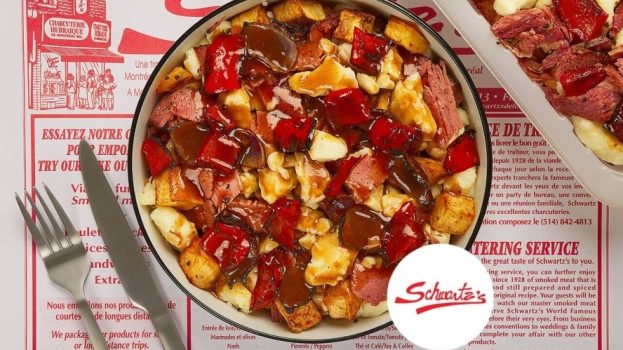By Mario Toneguzzi
This story originally appeared in the Summer 2021 issue of strategy.
The appeal of convenience has accelerated over the years, fuelling the burgeoning growth in frictionless shopping experiences. Barriers are being removed and innovation in retail is flourishing – particularly as the world is turned upside down by the pandemic.
With the drive toward frictionless shopping, retailers are better able to gather a wealth of information about consumers – their customers. From transaction logs to online shopping and loyalty programs, they’re finding out what people are buying, when they are buying, how they are buying and at what price point. Combined with traditional research such as surveys, focus groups and staff feedback, retailers are using frictionless retail tech to pinpoint the buying habits and behaviour of consumers store by store and region by region.
Take Grocery Neighbour, for example. The concept (featured image above) for the “grocery store on wheels” was born in March 2020 as a direct result of the pandemic and is set to hit the streets of Toronto this Summer. The 18-wheeler trucks will stock a variety of products – including fresh produce, meats, fish, bakery and specialty foods – cruising around a neighbourhood like an ice-cream truck.
As the fleet rolls out, Grocery Neighbour will curate products for each neighbourhood it serves by partnering with local farmers, bakers, and butchers. Using an app, customers can flag down the mobile store, add to their shopping basket, as well as scan and pay for products. The in-app checkout will grant the retailer with data and insights on what customers are buying so that product assortments can accurately reflect the ethnic, cultural or seasonal needs of their customers.
In the past three years or so, there’s been the rise of a cottage industry of tech startups trying to get in on the contactless and cashierless craze, says Jason Dubroy, SVP, commerce and experience at Mosaic. A big player in the space is Adroit Worldwide Media (AWM), which has created a closed loop system that integrates cashierless shopping with in-store advertising via digital screens.
“This is brilliant, as it not only controls the transaction, but powers a whole different notion of impulse buying by suggesting recipes or sale items in other parts in the store based on what you already have in the cart. And then, through the same signage system, it tells you exactly where in the store those complementary items are and even offer dynamic pricing. It’s also interesting as the tech works directly with a local retailer app,” he says.
While compelling to consumers and retailers alike, mobile stores like Grocery Neighbour and “just walk out” concepts like Amazon Go are currently still very niche, according to consultancy Strategy Analytics. They can be “exorbitantly expensive to implement and maintain,” says the firm, and they aren’t really suitable for verticals outside of grocery and convenience – electronics may do better with a concierge sales approach than shop-and-go, while apparel is better conducive to trying-before-buying shopping experiences.
Dubroy agrees that one of the things holding back larger retailers from jumping on the contactless and cashierless trend is the cost of changing their legacy IT systems and infrastructure.
“As the concept of convenience itself is changing – from the advent of so-called micro-trips to click-and-collect sampling and Instacart – frictionless retail has the most growth opportunity in smaller format environments,” he says. “Rather than spend big bucks to retrofit an entire store, we’ll see more kiosks that unlock with your phone, more remote delivery options, and ironically more elaborate ways to make things seem easy.”
And – as with many evolving technologies – there are also equity issues inherent in cashless concepts, says Dubroy. For example, in Amazon’s case, up until 2019, cash was not accepted, nor were public assistance tools like food stamps for those with low income. People also needed an Amazon app-enabled smartphone to even get into the store. Some considered this discriminatory behaviour, and several U.S. cities passed legislation outright banning cashless retail stores. It will be interesting to see how tech companies and retailers answer the call of social responsibility on their path to mass adoption, he adds.
So, as retailers grapple with the challenges around infrastructure and cost, the question is: do the benefits outweigh them? For Frank Sinopoli, CEO of Grocery Neighbour, the answer is a resounding yes, “because regardless of how great your product is, if someone makes it easier for the consumer to buy equally great stuff, it just makes more sense for people to go in that direction.”
“The idea of having these frictionless environments and shopping experiences really gives [consumers] control. They’re on their schedule,” he adds. “It’s all about the ridiculous ease of use and complete convenience. It’s woven into society. People want things now. They want it easy and they don’t want to jump through any hoops. So the easier you can make it for them the better.”
Dubroy says that while shoppers were once mostly driven by price, there is now increased value on the worth of one’s time, putting a unique lens on the concept of convenience, which has become a competitive advantage.
“[The drivers are] threefold. The first is that we all live in an era of ‘exponential expectation.’ Anything that saves time or removes friction from a collective system or process must, by nature of expectation itself, continue to get faster or better,” says Dubroy. “Debit cards came out in the ‘80s, contactless payment came a decade later, and now there’s a myriad of ways to shop – from Google Pay to biometric devices and physical recognition systems to AI-driven technologies. Shoppers used to be patient, but the advent of one-click buying and same-hour delivery changed that forever.”
He says the second driver – the most relevant one today – is the global pandemic. “Even though many say the physical role of the store is changing, the latest statistics show that almost 90% of Canadians continue to buy food in-store during the pandemic. So retailers are looking for ways to reduce vectors of transmission and risk to staff and shoppers,” says Dubroy.
“The third is a much more obvious goal: to reduce cost. In a period when many retailers are maxing out their ability to drive incremental revenue through grocery sales themselves, labour and benefits reductions are still very appealing.”
For years, giant retailer Walmart has spent millions of dollars, and continues to do so, in designing frictionless shopping experiences for its customers. In July 2020, the retailer made a $3.5 billion commitment to modernize 150 of its stores in Canada – making up more than a third of its network in the country – over the next three years.
Lee Jeyes, senior director, store process and innovation at Walmart, believes the future of Walmart’s business will not be separated into silos. It’s not just about investing in ecommerce and also in its stores, but rather about blending the two together.
The retailer is doing just that by adding contactless systems, like tap-and-pay or “Check Out With Me” technology, where shoppers can pay mobile-toting floor associates anywhere in the store. It’s also upgrading aisles with electronic shelf labels and scanners, as well as AI cameras that keep track of inventory in real-time. The recent commitment adds to previous investments like its Urban Supercentre in Toronto, an innovation lab where it’s been testing some of this tech since 2019. “We’re continuously looking at new ways to be able to serve customers in ways they would like now, and in the future,” says Jeyes. “Convenience, speed, and saving customers money and time, is really where we spend most of our time as an organization.”
Other retailers and organizations have been testing frictionless concepts, like McGill’s Bensadoun School of Retail Management, which has been working with Couche-Tard in Montreal to create a store for autonomous and contactless checkout where customers can walk into a Couche-Tard location, grab the items they want, pay and leave using an app. As is the owner and operator of several shopping centres, Cadillac Fairview, with its LiVE by CF app, which gives shoppers access to more than 65 retailers and hundreds of thousands of searchable products in a single platform.
Jose Ribau, EVP, digital and innovation of Cadillac Fairview notes that the biggest challenge for retailers is figuring out how to “invest in a great digital experience without increasing the cost of your product in a way that you turn off the customer.”
However, Professor Saibal Ray, academic director at McGill, believes technology is enabling growth in ways never before imagined, allowing companies to implement omnichannel innovation “in a financially responsible way.” And Dubroy agrees – he says the industry is beginning to see more contactless concepts in market as it becomes less costly to implement.
“Amazon is now selling their ‘just-walk-out’ tech to other retailers, opening up the experience to those who don’t have an Amazon account, including airport retailer Hudsons,” says Dubroy. “In Europe, Netherlands-based Wundermart runs 70 cashierless ‘grab-and-go’ stores that are between 50 and 200 square feet and found in offices, hotel lobbies, and transportation stations.”
Lisa Hutcheson, managing partner of J.C. Williams Group, believes convenience-driven innovation in retail is endless and expects to see more opportunities in servicing customers around the clock. “The traditional model of retail, of their opening hours, is going to have to change and we’re going to have to adapt to be able to service customers on a 24/7 basis. That may mean looking at more automated stores. Obviously, Amazon set the tone with it.”
And frictionless shopping, says Bruce Winder, president of Bruce Winder Retail, is going to continue to expand simply because of the impact the pandemic has had on society. “I think there’s going to be a number of people who are going to be a little gun shy now as it relates to touching things in store,” he says. “Even though the pandemic will eventually end… there’s still going to be that residual fear and residual consciousness of germs that is going to make a fair amount of the population want to avoid touching anything at retail.
“You’re going to see this type of technology become ubiquitous… Grocery is one of the first to embrace it because it’s such a low-margin industry and high-volume industry. I would imagine it’s going to continue to grow and the cost to start these systems will go down as more people enter the market and the industry will learn how to monetize it so that the payback is even quicker and consumers will become used to it.”




























